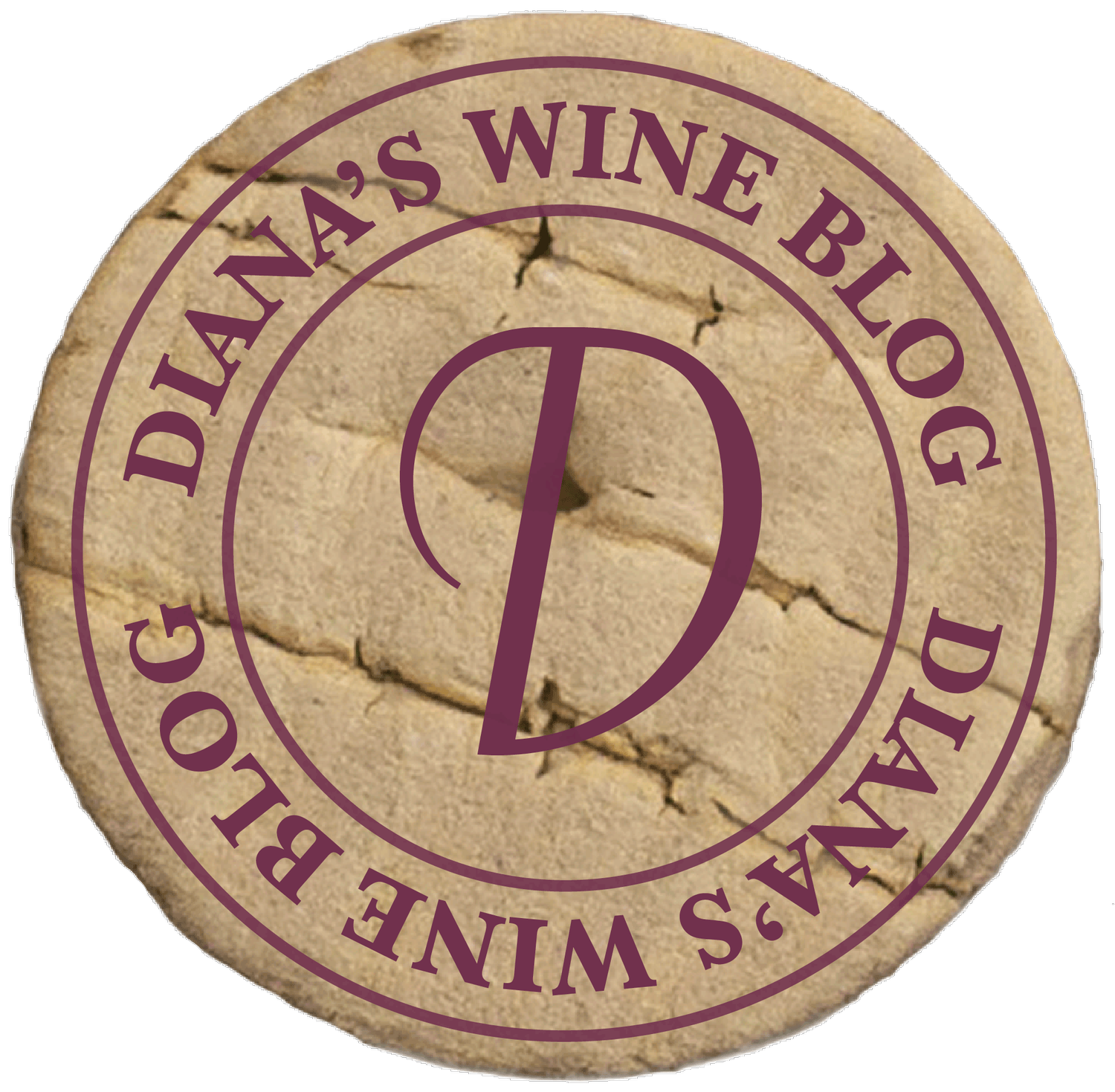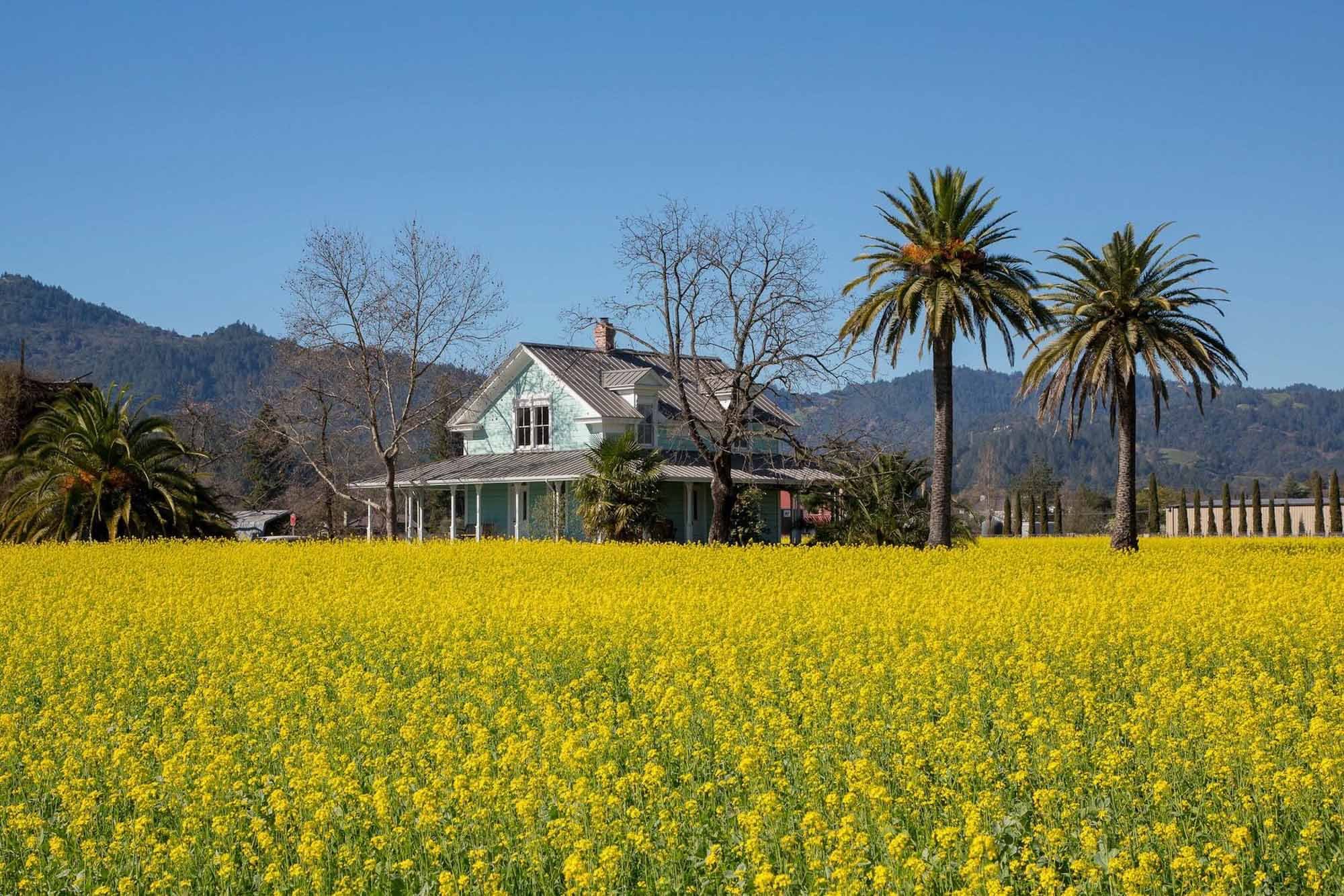
Mustard: Not Just a Pretty Face
The Napa Valley is beautiful to visit at any time of the year. Each season has it moments that are amazing. Right now, the vines are “resting” and have been cut back in preparation for the growing season. Temperature changes are what stimulate the growth, and presently it is chilly. Bud break, the initial beginning of growth happens, generally around St. Patrick’s Day. We are still a good month away from that time.
What you will see at this time of the year, which can be amazing, is the vast fields of yellow mustard in the vineyards. Rows and rows of bright yellow flowers fill many of the vineyards and peak around this time of year. Glorious bright yellow that spans acres of trimmed vineyards dot the valley. This is what the vineyard manager terms a cover crop. It is more than just a "pretty face."
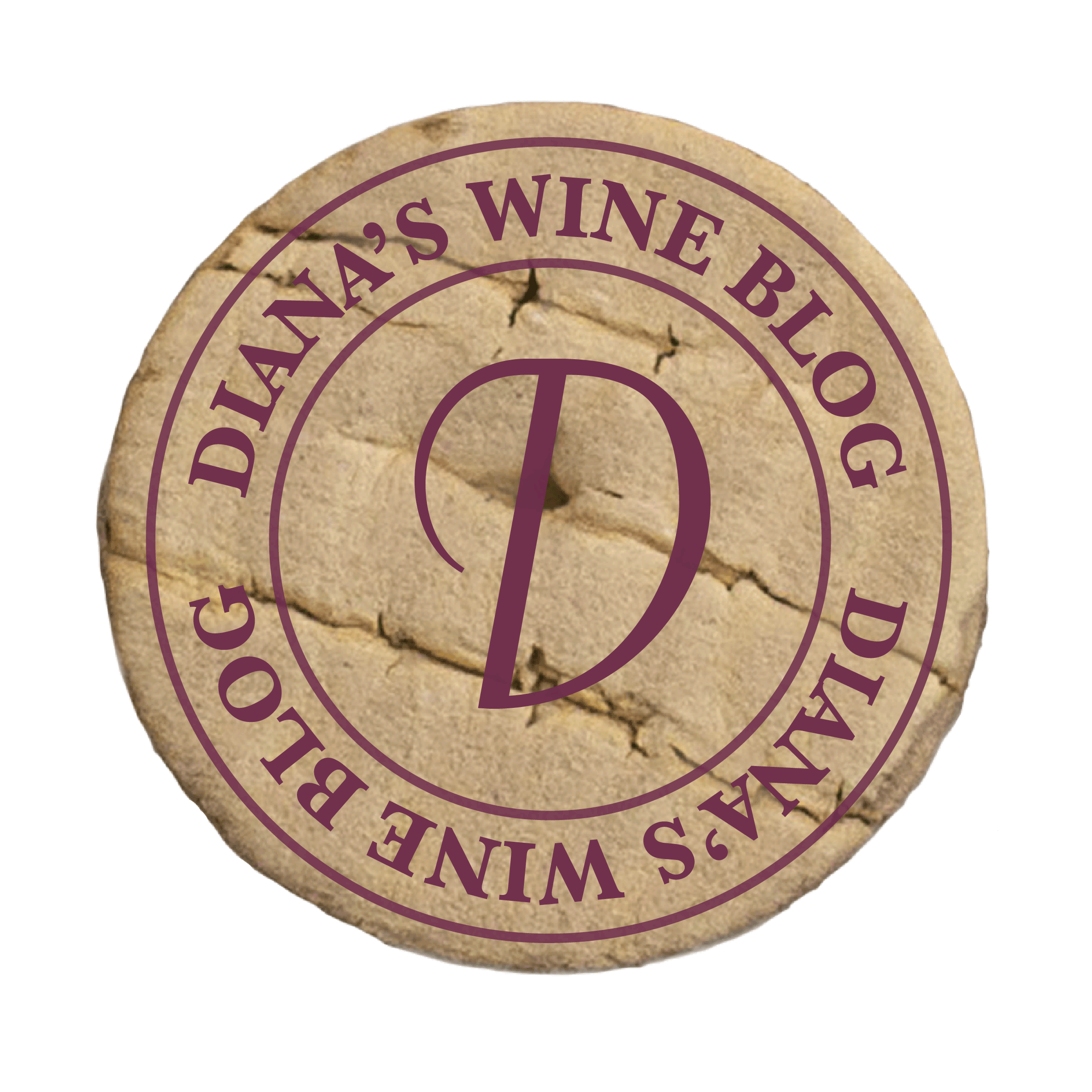
Cabernet and Chocolate: A Match Made in Heaven?
Just this past weekend, I had the pleasure to attend a luncheon and tasting at a winery. The dessert that was served was brownies, and a friend said all he wanted at the moment was some more Cabernet to go with his brownie. He said it was a great pairing. Let me say, maybe not.
Below are Karen MacNeil’s comments (she is the author of The Wine Bible) on the pairing of Cabernet and Chocolate:
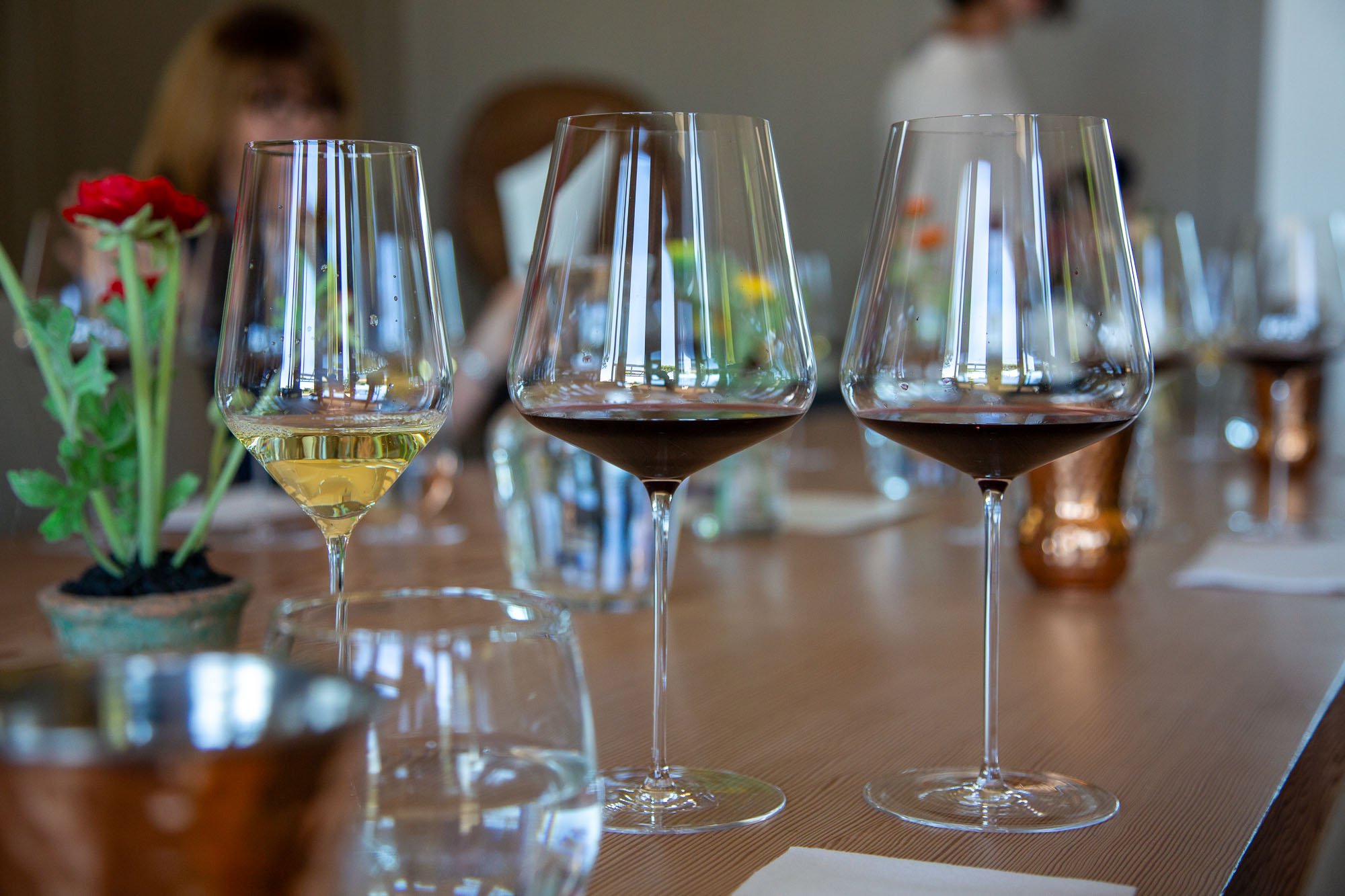
Wine: What’s in the Glass?
The first evidence of wine consumption has been traced back to China in 7000 B.C. In 2007, researchers at UCLA discovered the first evidence of a winery in 4100 B.C. According to an article in National Geographic, what we know to be the oldest winery was founded in ancient Armenia.
So wine is an age-old friend, deeply woven into many rituals. You know that, yet do you know what is in your glass? What are the constituents of wine?
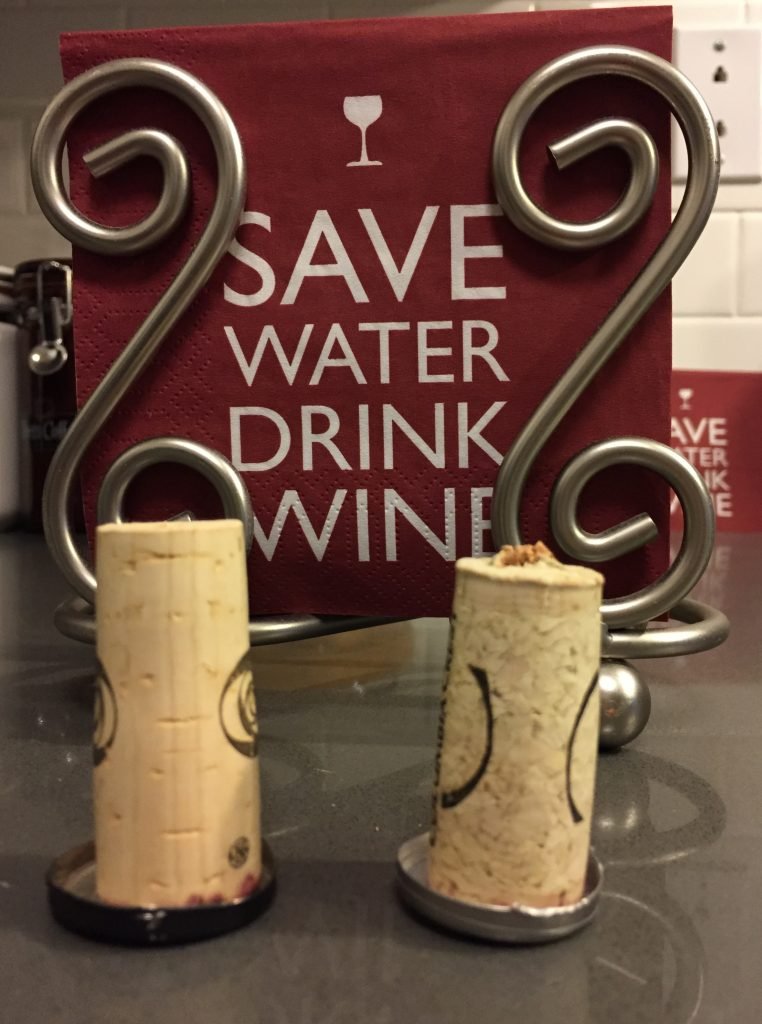
Put a Cork in It — Or Not!
Your waiter has gracefully opened the bottle of wine and gently places the cork in front of you. What should you do? Actually nothing – you may smell the cork to see if it is good (the cork that is), yet it will not tell you if your wine is flawed. That comes when you smell the wine itself. The ceremony of presenting the cork evolved as the wine industry fought forgery. The one way to be certain that the wine in the bottle was what was represented on the label was through the cork. Wineries embed their name on the cork, and this should authenticate the wine.
Cork has been used as a closure for wine for hundreds of years. It is an age-old tradition – the popping of a cork is part of the process of enjoyment. Natural cork comes from the bark of the cork tree. Most top quality corks used today come from trees grown in Portugal.

The Nose Knows: Part 2
The sense of smell is critical for taste – whether it be when tasting food or wine. Remember, we can discern 10,000 different smells, at a minimum. A recently published paper touts that we can distinguish up to 1 trillion smells! The second number is a mathematical extrapolation, not based on a human study. Either way you look at it, we can discern a lot of smells. It again makes the point of how important wine aromas are and just how much they factor into the pleasure.
Why do I bring this up again? Well, one of the first places to be using that super sense of smell is in the glass before you pour the wine. The glass itself (not the wine) may often be the source of what we perceive as off odors or spoiled wine. The first thing I do is smell the glass to ensure that it is clean and free of any off-putting aromas itself.
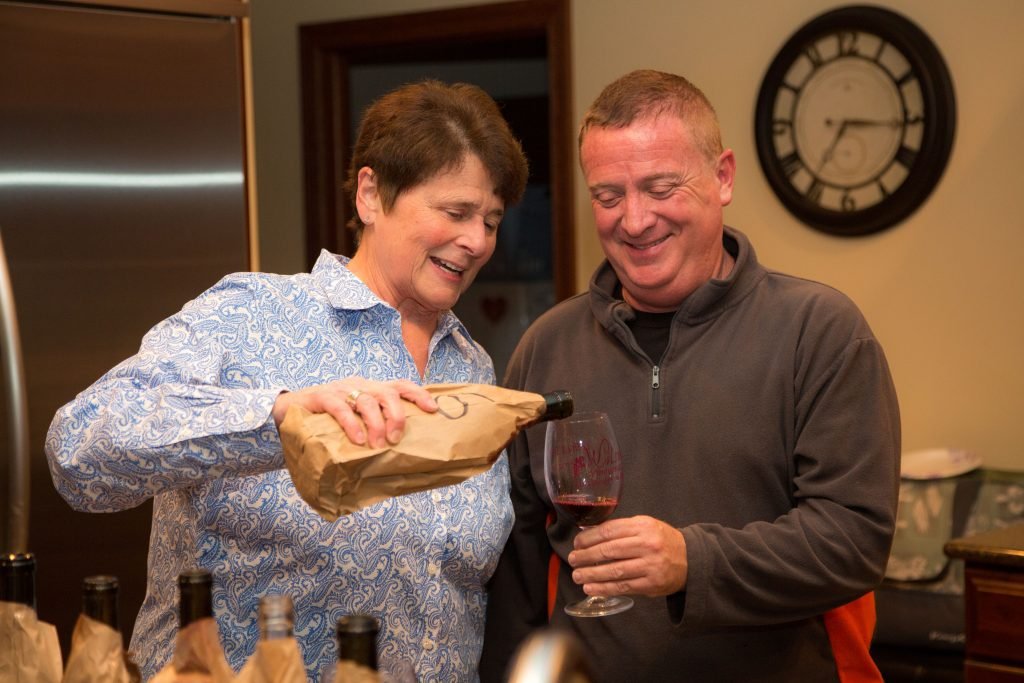
The Nose Knows
Every year during the holidays, the family hosts a wine tasting party. The purpose is to share good wine and enjoy each other in a festive environment. Each year, there is a challenge regarding varietal and matching wines to their profile. There is always a variation on the theme to pique everyone’s interest and to learn something new.
One would think that the most important aspect in identifying the different wines would be the taste, yet consider that one of the most critical aspects is the nose. What does that mean? The nose is the main source of our sense of taste. While we can only taste five distinct flavors (sweet, sour, bitter, salty, and savory), we can smell hundreds of thousands of distinct aromas. Remember the last time you had a head cold and couldn’t smell a thing? Food did not taste very good, if you could taste it at all. Test this out by holding your nose and taking a sip of wine.

Decanting to Add Enjoyment
There are two very good reasons to decant wine. The first relates to aged wines, and the second is about aeration.
Let’s start with aged wines. Wines with some years “under their belt” age and evolve. Part of that evolution may be the formation or evidence of sediment in the wine. This is not desirable to taste or drink – therefore decanting is the best approach. Decanting the wine will allow the sediment to sink to the bottom, and the pleasure of the wine will be at its fullest.
The second reason is actually about aeration. Just recently, I was in a class and heard some interesting facts. One – that 90% of all wines purchased are consumed within the first year. Two – the next 9% are consumed within 5 years. That is not a lot of aging time for a wine. Many wines require some time in bottle to truly show their best “stuff.” So if only 10% of wine is truly laid down to age gracefully for at least some time, then what is a person to do? That is where a decanter can be a really good friend. It will allow your wine to “open up” and provide greater accessibility to the aromas and flavors. Aeration will enhance your wine experience and make it more accessible for your enjoyment.

Older Wines Need to be Laid Down…
My mother told me that if you can’t say something nice, say nothing at all. I usually abide by that statement and yet sometimes… I was in a wine store the other day (imagine that) and was picking up a prize for a wine tasting party. I could not help myself – I had to browse the aisles and see what gems there might be on the shelf. I was a bit disturbed to see some older wines standing up. An example was a 2006 wine called La Serena Syrah – there were nine bottles, all standing at attention. The challenge for you, the consumer, is not knowing where and how these bottles were held for the last six years (many wines are not released from the winery until about two years after the harvest year). This wine costs about $60 and should be resting on its side to reach you and your glass in the best possible condition.

Time to Check the Temperature at Home
The ideal temperature for wine storage has always been touted as between 55 and 57 degrees. This is the best temperature for reds to age gracefully over the long term. Well, now we have a scientific study to document what happens when we keep wine in warmer temperatures, such as would be normal for a home. Now scientists have done a study showing that wine stored in a typical home can age four times as fast as wine kept under ideal conditions.
The experiment was conducted with 400 bottles of Sangiovese. 200 of the bottles were stored in the ideal conditions, while the other 200 were kept at temperatures typical of the home environment.

Just Say No — to Bad Wine
Travel and being on the road can be tedious at times. While many hotels do their best to be hip and even provide wine tasting hours, many fall short. It can be a real challenge to get a good glass of wine while traveling and staying in hotels. Ordering wine by the glass in the restaurant can be frustrating as well. Recently, I have had some experiences that have taxed my taste buds.
Just recently, I was staying at a hotel in Los Angeles, and their steak house had a Wine Spectator Award of Excellence. I was by myself and ordered a glass of wine off the wine list. The list touted a Washington wine from a very good vintage, and I was excited to try it. They had good crystal on the table, so I expected a great glass. Upon arrival, the wine had no aromatics; the taste was flaccid and bitter. This was unacceptable.
